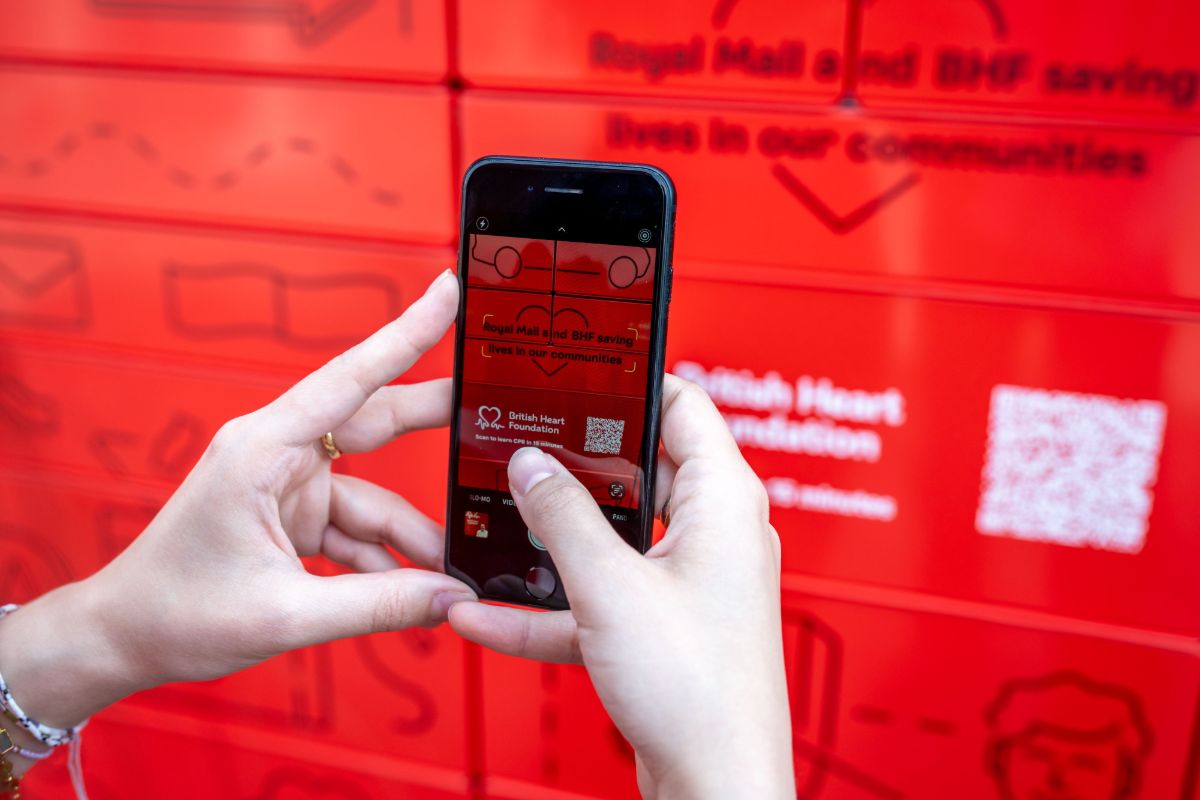WITH CLICK-AND-COLLECT RAPIDLY BECOMING UBIQUITOUS, SHOPPERS ARE TAKING THE SAME APPROACH TO RETURNS – BUY ONLINE, RETURN TO THE NEAREST OUTLET – CREATING PROBLEMS FOR BOTH RETAIL PROCESSES AND SYSTEMS. PENELOPE ODY REPORTS
It is a familiar sight in the weeks after Christmas. Dedicated returns desks in many stores with well-trained staff collecting unwanted presents in exchange for gift vouchers. And it is a sight which may become an all-yearround phenomenon as shoppers logically assume that if they can collect their online purchases from a local store, then they can return them there just as easily.
It may be logical, but it can play havoc with retail inventory management, quality control, payments processing and staff morale – and it is an issue that will only become more complex as cross-channel shopping increases. As Mark Johnson, associate director of the operations team at Javelin Group , says: “As omnichannel continues to grow, increasingly there will be a consumer perception that they have bought a product from company X and hence should be able to return it either to the place they collected it from or any of the stores regardless of format.
Their relationship is with that company, not a specific division or part of it.” Alek Adamski, associate partner at Kurt Salmon, agrees: “A shopper might buy clothing or electricals from a Tesco Extra or Superstore and then take them back to a local Tesco Express if there was a problem,” he says. “What is going to happen to those products and how will the Express staff be able to assess if the reason for return is genuine?”
IT’S COMPLICATED
With companies such as John Lewis now promoting click and collect for a range of goods via its Waitrose supermarket chain, actually managing returned orders involving lines which will never be stocked at the return store will become an issue for many. For retailers trading through a mixture of franchises and concessions as well as their own standalone outlets, the returns issue becomes even more complex. As John Bovill, commercial director at Jacques Vert, points out: “If you have your own employees in the concession then you may get good feedback on the reason for the return, which can help improve the range, sizing or whatever.
But that needs interaction and interest from the sales staff. Often a customer will just say that the garment ‘wasn’t suitable’ and the retailer’s store staff aren’t that interested in pursuing the reasons further but will simply give a refund.” Equally there is an inevitable temptation for store staff to record returned merchandise as originally sold on the web, even if the goods were bought in the store, in order to protect their own departmental sales figures, which can also significantly distort any attempt at analysing why online orders are rejected.
ON THE UP?
A problem in fashion – and one all too familiar from mail-order days – is that shoppers tend to order two or three of the same style but in different sizes and then return the ones which don’t fit. “This isn’t such a problem for us,” says Bovill, “as we have an older demographic and it is occasion wear, but I hear from colleagues in the younger or fast fashion sectors that this sort of behaviour is creeping into ecommerce and that will certainly increase the level of returns to stores.”
“ Ecommerce return rates are running at 22% this year, which is much higher than a year ago. Returns have got easier for customers ”
According to Andy Mulcahy, head of communications at the IMRG, there has been a significant increase in ecommerce returns rates over the past year: “We believe it is averaging 22 per cent of sales,” he says, “which is much higher than a year ago. It is probably because customers are finding goods much easier to return – especially with systems like CollectPlus now becoming more widespread. Customers are also starting to regard shops as a storehouse – a place where they can collect goods ordered online and take them back if they are not suitable.” Getting the merchandise back to store is just the start of a retailer’s problems. It may be an item that is not stocked by that outlet so logging it back into inventory may not be easy since the line will not be included in the store’s product catalogue.
Goods can languish in the back office or be lost either there or en route to the distribution centre if they are sent off with inadequate documentation. Putting returned clothing on an oddments rail at reduced price may be acceptable at sale time but is something most retailers would rather avoid when trying to sell products at full margin. “Retail supply chains are not designed to handle returns,” says Alek Adamski, “and getting goods back can be expensive. At the high end it is worth sending goods back to the distribution centre but for lower value items it is not economic – the total cost can be into tens of pounds, which can be greater than the value of the goods. Also if it is a fast fashion item there is the latency issue: by the time it is back in stock the range may have moved on. Maybe the item can be refurbished in-store and sold on an odds-and-ends rail? Returned electrical goods must also be tested before resale – is that something a retailer can do instore or does everything have to go back to the DC?”
MORE INTEGRATION, PLEASE
Apart from the need to process physical goods, returns also need good record keeping and systems. “If you have a fully integrated system with full stock visibility it should be easy to log the item back into stock at the till,” says Tony Bryant, head of business development at K3 Retail. “If not, stock transfers can be complex to manage and take time and it can be several days before the item is recorded as in stock and available again.” Ideally a sales assistant should simply be able to enter the online order number from the customer’s despatch docket at the till to pull up full details of the customer, payment method and so on.
In practice, not all systems are so fully integrated so managing the customer’s refund can be a problem. The customer may use a different credit card for online purchases to the one carried in her purse or the number may be difficult to track through the system, especially since there is a need for both online and instore payments to conform to PCI rules. The answer can be simply to offer a cash refund or gift voucher which is unlikely to be what the shopper wants.
“Handing £200 or more back to the customer in cash is probably not the service they expect,” adds Bryant. “The online EFT provider will generally also be different from the one used by stores so reconciling sales and returns can be difficult.” Mark Johnson agrees: “Returns to store are often refunded via the point of sale and the original order is not updated, which means you have inaccurate and complex reporting issues of the true returns rate for the online channel. There can also be a lack of visibility to the original order showing the price paid or any promotional discount.” Too many web refunds can also hit store performance figures, so need to be carefully identified at a time when many retail chains are rationalising branches and weeding out the least profitable. “There can be a negative impact on stores’ P&L if web returns are processed through their PoS systems,” says Johnson, “and the store very likely has no recognition for the original sale, which may have been click and collect. This can be especially significant for smaller stores that are popular as return destinations for online shoppers.”
UNDERSTAND THE OPPORTUNITY
Faced with myriad such problems it is perhaps surprising that retailers still regard returns as an opportunity. “Shoppers who buy both online and visit the store tend to be your most loyal customers with the highest spend,” says John Bovill, “so having the customer in store to return an item has to be seen as an opportunity – not just to sell a replacement item but to drive footfall and add incremental sales. Strategically, we see returns to store as a service to customers and service is essential for brand equity. For us, fit is also a critical issue: it is our USP, so if we can get qualitative data from customers about why they are returning items it can help in the longer term.”
“ For us, fit is a critical issue so If we can get qualitative data from customers about why they are returning items it can help with our understanding in the longer term ”
“We are trying to convert our online customers into in-store customers,” says Marc Tapping, ecommerce business manager at Beyond Retro, “as that is the best way to buy our products, so that’s the ultimate goal for us. Returns are part of that: if we offer return-to-store as a return option it gets more customers into our real-world stores. Once they are there we think they will probably browse and may buy something, since all our pieces are unique.” Given that anything that helps footfall is potentially beneficial then return to store can be turned to advantage – not least as a means of enhancing the endto-end customer experience. If in the future, as some analysts predict, major multiples will retain stores in perhaps just 100 key locations, the returns issues might be very different: collect in-store, return to DC perhaps?
SPEAKING FROM EXPERIENCE
THINGS ARE CHANGING
“It’s those structural changes at the retailer that are the ones that are really fundamentally going to make a change to the industry. You want fluid, multitalented teams meeting that same complexity around the multichannel journey for the consumer and you want visibility, through reporting.”
Alek Adamski, associate partner, Kurt Salmon
MAIL-ORDER MINDSET
“Mail order purchasing behaviour is now being reflected online – the old buy-three- and-send-two-back pattern. That will certainly bring an increase in returns. Mail order women’s wear used to be 50 per cent returns; in ecommerce it is now around 30 to 40 per cent.”
John Bovill, commercial director, Jacques Vert
IN-STORE RETURNS DESK SHOULD STAY
“Many retailers put in a dedicated returns infrastructure post-Christmas. They really need to identify best practice here and implement that as an operational and everyday function. The dedicated returns desk has to become a permanent feature of the store.”
Tony Bryant, head of business development at K3
OMNICHANNEL NEEDS BUY-IN
“Retailers need to ensure buy-in of the benefits of omnichannel across the organisation so as to ensure no barriers for customers to return to store. That can include integration of online systems with PoS to provide visibility of the original order and to improve reporting, as well as an effective, simple reverse supply chain to move stock around as appropriate with full visibility and audit trail.”
Mark Johnson, associate director, operations team, Javelin Group
CLICK AND COLLECT BOOSTS INTERACTION
“Developments like myhigh.st can help: it features local retailers where customers can effectively click-and-collect items from stock and actually see the items and interact with sales staff before they leave the store. That can help both reduce the level of returns and also make returns handling easy.”
Andy Mulcahy, head of communications, IMRG [irdx VIMR]





